|
These were, shockingly, the runaway smash hit of my Scandinavian Midsummer Porch Party. And here I thought no one would like them! But they were the first to go of the open-faced sandwiches on offer and the only ones to have every last sandwich devoured. I probably should have made more... You may be asking yourself, what the heck is a "Ski Queen Brunost Open-Faced Sandwich?" Dear reader, Ski Queen is a brand of brunost widely available here in the United States. And what exactly is brunost? And how is it different from gjetost? Did you even know you needed the answers to these questions? Brunost is literally Norwegian for "brown cheese," and it is a very special, very specific style of cheese that is not really a cheese at all. Made from caramelized whey, this super-smooth, sweet and salty cheese can be made from either cow's milk whey (brunost) or goat's milk whey (gjetost). Whey-based cheeses, or mysost, date back over 2,000 years in Scandinavia, with the earliest evidence found on Jutland, Denmark. Going back hundreds of years, Norwegian dairy farmers perfected the use of whey, the milky yellow liquid leftover from processing butter. The original brown cheese, mysost, was literally just whey boiled until all the water evaporated and it caramelized into a sweet, grainy, fudge-like substance. But brunost is cow's milk whey that has cream and milk added in, which makes it creamy, smooth, and addictive. This addition is attributed to dairywoman Anne Hov, who helped revive the failing dairy industry in Gudbrandsdalen, Norway, in the 1860s. Later variations included goat's milk (gjetost) and "ekte gjetost" or "real goat cheese" is a brown whey cheese made from only goat's milk whey and goat's milk - it has a much stronger flavor than brunost and a sweet-salty tang. Brunost was typically served with open-faced sandwiches, on Norwegian heart-shaped waffles, or eaten plain as a snack. Modern cooks have used it in all sorts of ways, but one of my favorites is a creamy gjetost sauce for chicken. Today, most commericial brunost is produced by Tine - a Norwegian dairy cooperative that started in the 1850s and is named after the special bentwood boxes Norwegians used to store butter in the days before refrigeration. Tine also produces Jarlsberg. In the United States, you can get the cow's milk brunost and goat's milk ekte gjetost under the Ski Queen brand, so named because of the association in Norway of brunost with skiing, since brunost holds its shape under a wide range of temperatures, and its sweetness and fat helped replenish energy after a long day of skiing. Brunost Open-Faced SandwichesThis really will win converts. If you want to be bold, have a tasting of both the milder, sweeter brunost and bolder gjetost. thinly sliced buttered rye sliced brunost a dollop of strawberry jam You'll need your ostehøvel to get appropriately thin slices - a knife will be too thick. Make sure to get high quality strawberry jam - not too sweet, not too thick (my favorite is Welch's natural strawberry). These little sandwiches are basically like grownup candy. You can see why they are so popular in Norway and why almost everyone who tries it loves brunost. Have you ever tried it? The Food Historian blog is supported by patrons on Patreon! Patrons help keep blog posts like this one free and available to the public. Join us for awesome members-only content like free digitized cookbooks from my personal collection, e-newsletter, and even snail mail from time to time! Don't like Patreon? Leave a tip!
0 Comments
When planning the menu for my Scandinavian Midsummer Porch Party, I wanted to make sure to have some sandwiches hearty enough to stand in for dinner. We can't all subsist on salads and dessert! But while these sandwiches are decidedly NOT friendly to folks who don't eat pork or meat (always make sure all guests can eat!), they are delicious and worth a try for those of you who do eat pork. Although many people don't realize it, ham is quintessentially Scandinavian. It is a popular Christmas and Easter dish, and the Danish pork industry supplies most of Continental Europe. We always had ham for Easter growing up, and sometimes for Christmas, too (along with Swedish meatballs). It's also a popular sandwich meat in the United States, where deli-style hams are very similar to those produced in Denmark. Jarlsberg is also a popular Scandinavian cheese here in the U.S. A Swiss-style cheese introduced to the dairy farms of Jarlsberg, Norway in the 1850s, it had disappeared by the 20th century. In the 1950s, scientists at the Agricultural University of Norway were intrigued by a graduate student's paper on the historic cheeses of Vestfold, Norway (where Jarlsberg is located) and set about to recreate the historic Swiss-style cheese. Rich and very butter, with extra-large holes, Jarlsberg is coated in red wax and the details of its production are a trade secret. Combining the two on pumpernickel rye with a dollop of lingonberry jam seemed like a match made in heaven, and I was right. Lingonberries, also sometimes known as partridgeberries or cow berries, are a relative of the cranberry. Lingonberries are native to the boreal forests of Scandinavia and the rest of Northern Europe, Russia, Alaska, Canada, etc. Tiny and tart, they feature heavily in Scandinavian cuisine, especially with game meats and in desserts and drinks. If you can't find lingonberry jam, you can substitute cranberry sauce, but it won't be the same. Ham and Jarlsberg Open-Faced Sandwiches with Lingonberry Jamthinly sliced sturdy pumpernickel bread butter shaved natural ham Jarlsberg cheese lingonberry jam or preserves Butter a slice of pumpernickel or rye bread thinly, edge-to-edge, and top with a slice or two of natural (I prefer bone-in) ham. Add a slice or two of Jarlsberg on top (use a Norwegian osthovel for best results!) and top with a small spoonful of lingonberry jam. The salty, fattiness of the ham, the buttery taste of the Jarlsberg, and the acid sweetness of the lingonberry jam work just wonderfully together. Plus they're pretty, too! You can serve these as part of a smorgasbord, like I did, or alone for a fancy lunch. The bread tends to dry out if left out too long, so if you have any party leftovers, be sure to seal and refrigerate to ensure freshness. I like to make the leftover open-faced sandwiches (if there are any!) closed by simply placing to of them together, open faces in! The Food Historian blog is supported by patrons on Patreon! Patrons help keep blog posts like this one free and available to the public. Join us for awesome members-only content like free digitized cookbooks from my personal collection, e-newsletter, and even snail mail from time to time! Don't like Patreon? Leave a tip! Salmon is a classic Scandinavian dish. Spring salmon runs up the fjords and rivers of Scandinavia from late May/early June through most of the summer. Salmon is eaten fresh, but it is also made into gravlax, a mild cold-cured dish made by burying whole salmon filets in a mixture of salt, sugar, and herbs. Salmon also features in many New England summer traditions, including Fourth of July menus, which consisted largely of salmon, new potatoes, and fresh peas. Historically, as with many springtime fish runs, salmon was inexpensive and easy to obtain, both in the United States and Scandinavia. Not so anymore. I wanted to serve salmon at my Scandinavian Midsummer Porch Party, but I was also short on time and feeding a crowd. I decided against the more intensive prep of a poached or grilled salmon filet and settled on the easier and more wallet-friendly canned salmon instead. I use the smaller tins of sustainably harvested wild-caught salmon that don't contain any skin or bones. The inspiration for this recipe came from a historic one I saw a while ago. Linda Hull Larned's One Hundred Picnic Suggestions cookbook, published in 1915, had a recipe for Salmon Salad which called for the use of rice, but offered an alternative of hard boiled eggs and cucumber. Since I was already making deviled eggs, I decided to go a little lighter and use just cucumber. Salmon Cucumber Salad Open-Faced SandwichesThis recipe makes a lot of sandwiches (enough for all of the ones pictured above), so feel free to cut the recipe in half if you're serving fewer people. 2 cans (5 oz. each) salmon 1 cup finely chopped English cucumber 2 scallions, sliced fresh dill, minced lemon juice or white wine vinegar salt pepper 1 tablespoon Dijon mustard mayonnaise Drain and flake the salmon, then stir in the cucumber, scallions, and fresh dill. Add salt and pepper and a splash or two of lemon juice or white wine vinegar and toss to coat. Stir in Dijon mustard and mayonnaise to coat. Serve on thin slices of fine-grained but sturdy white bread (I used semolina batard). You should probably butter your bread slices - I didn't, thinking the mayonnaise was moist enough, but they got a little soggy! You could also serve on toast or with water crackers. If you can't find or don't like salmon, you could certainly substitute tuna. But if you don't generally like tuna salad, give salmon salad a try! It is milder-tasting and the cucumbers give a refreshing crunch. If you wanted to be extra-fancy, you could certainly also use leftover grilled, poached, or roasted salmon, flaked, although be aware that most modern salmon filets are going to be fattier than canned salmon, so keep that in mind, flavor-wise. The Food Historian blog is supported by patrons on Patreon! Patrons help keep blog posts like this one free and available to the public. Join us for awesome members-only content like free digitized cookbooks from my personal collection, e-newsletter, and even snail mail from time to time! Don't like Patreon? Leave a tip! Growing up, I considered Scandinavian-style open-faced sandwiches the epitome of style. Which, in a region where "traditional" Scandinavian food is essentially variations on meat and potatoes, it was! I requested a Scandinavian smorgasbord for my high school graduation party, and that's what I got! Of course, mine were more American than the traditional Danish versions with tiny shrimps or smoked salmon, but still delicious. When planning my Scandinavian Midsummer Porch Party, I knew I wanted open-faced sandwiches for the main dish, because they would be relatively quite and easy to assemble, and they were small enough for people to have lots. Plus! They could be served cold, so no having to manage a hot main course. The official name for open-faced sandwiches is smørrebrød, which is Danish for (literally) "butter-bread," but which is used to refer to a very specific style of open-faced sandwich. Danish smørrebrød etiquette is a bit too formal for me - eating sandwiches with a knife and fork?! No thanks. I'm Scandinavian AMERICAN, after all. And there are some very specific types of sandwiches, and even an order in which to eat them! This is a party, folks. I don't tell people how to eat unless they ask for advice. I also find the formality hilarious given the very plebian origins of open-faced sandwiches. Conventional wisdom draws a direct line from Medieval trenchers (essentially plates made of bread) to open-faced sandwiches. As with most food history, there isn't a ton of concrete evidence, but it's a logical connection. Others draw a line between 19th century field food for farmers, who ate leftovers with buttered bread for lunch. Regardless, there are some commonalities between most open-faced sandwiches. 1. Fine-grained rye bread is the best and sturdiest foundation. 2. Yes, you have to butter the bread - thinly and edge to edge. This keeps the bread structure together and prevents it from getting soggy. Buttering edge-to-edge also helps keep the bread from drying out. 3. No, it cannot have another piece of bread on top. Otherwise it's not open-faced anymore! Other than that, the sky's the limit! I made four different ones for the party, and all were a hit. Here's my personal favorite: Dill Havarti and Summer Sausage with Cucumber on RyeAt that graduation party, a variation of this was one of my favorite sandwiches my mom came up with - tiny party rye slices spread with herbed cream cheese and topped with a slice of summer sausage, a slice of cucumber, and a sprig of dill. These aren't quite the same, but equally delicious. Fine-grained rye bread, buttered Thinly sliced dill Havarti cheese 1 slice summer sausage (not salami!) 1 slice English cucumber Summer sausage is a must here. It's almost impossible to find in my neck of the woods, so when I was in Ohio for a wedding back in April, and saw giant sticks of it in the grocery store, I grabbed one to take home. It's all gone now (sadly), and it wasn't QUITE as good as the stuff from back home in North Dakota (which is known for its sausage), but it was better than anything out here in New York. Unlike dried sausages like salami or pepperoni, summer sausage is able to be kept at room temperature because of a bacteria which lowers the PH of the sausage and gives it its signature tangy taste. You have to refrigerate it once it's unsealed, but it's softer and less fatty than salami and the flavor is just as good if not better. I saw dill Havarti in the store, so had to get it for this recipe. I got mine sliced at the deli. Havarti was invented in Denmark and is an incredibly buttery-tasting, softish, lacy-grained cheese that is just lovely on sandwiches. The tender, dense rye bread, butter and buttery tasting Havarti, the tangy, salty summer sausage, and the crisp, cold cucumber are just a delicious taste sensation. I cut the bread in quarters for easier eating and to fit the sausage and cucumber better. The Food Historian blog is supported by patrons on Patreon! Patrons help keep blog posts like this one free and available to the public. Join us for awesome members-only content like free digitized cookbooks from my personal collection, e-newsletter, and even snail mail from time to time! Don't like Patreon? Leave a tip! I made curried chickpea salad last week, and it was so delicious, I thought I would share it for Meatless Monday. Although it is not a historic recipe, clearly it's a riff on curried chicken salad, which had its heyday in the mid-20th century, although you still see it on restaurant menus, especially tea rooms and bakeries and small cafes. It's not super clear when precisely curried chicken salad was invented, but there are lots of references throughout 19th century American cookbooks to all sorts of curried dishes - eggs, oysters, veal, cucumbers, shrimp, okra, and yes, chicken, although not in a salad until the 20th century. Country Captain is one of the first curry dishes in the United States, and may have inspired curried chicken salad in the 20th century. Made with browned chicken, onions, curry powder, tomatoes or tomato sauce, and golden raisins or currants, it was meant to be served over rice and likely originated in the Carolinas, where rice cultivation (fueled by slave labor) was common. It is called "country captain" because it was apocryphally introduced via a sea captain returning from India and/or involved in the spice trade. This savory, sweet, and mildly spicy flavor combination has been deemed by some historians to be the first fusion food in U.S. history. But it is unclear where curried chicken salad as made in the United States draws its roots. It may very well be from the flavor profile of Country Captain, and mayonnaise-based salads were exceedingly common by the turn of the 20th century. Some enterprising soul may have come up with the idea independently. However, in 1935, King George V of Britain celebrated his silver jubilee, and although I cannot find an original menu from the event, everyone swears a cold chicken dish with curried mayonnaise was part of the dinner (which some people thought was an unnecessary extravagance during the Great Depression). The dish was recycled (perhaps inadvertently) for Queen Elizabeth's coronation in 1953, this time with some fancier additions of tomato, pureed apricot, red wine, and whipping cream (try the original recipe). Jubilee chicken and coronation chicken, as the recipes have come to be known, are still quite popular in Britain, although they rarely show up on American shores under that name. At the same time, prior to Queen Elizabeth's coronation, we do have recipes in the United States calling simply for cooked diced chicken, mayonnaise, curry powder, and diced celery (like this one). Basically, plain jane chicken salad with some curry powder thrown in for flavor. This 1930 cookbook has a recipe for chicken salad with grapes or raisins, and a recipe for curry salad dressing (curry powder, vinegar, and mayonnaise), but the two aren't put together. So again, the official origins are unclear. But suffice to say, a curried chicken salad with celery and some variation of either golden raisins, currants, diced apple, and/or grapes has become an alternative to the more traditional (and boring) basic chicken salad. I chose to replace the chicken with canned chickpeas in part because poaching chicken is a drag and I hate the canned stuff. But also because not only are canned chickpeas easier and more accessible than poached chicken, they're a little healthier for the gut, too. Vegetarians and vegans often use chickpeas as a substitute for chicken or tuna. It turned out even better than I remembered from the last time I made it, and it seems appropriately vintage, even if it isn't actually historic. Curried Chickpea SaladA quick weeknight supper perfect for when it's too hot to cook, but equally at home at a tea party. To make this vegan, substitute all vegan mayonnaise for the yogurt and mayo. 2 cans (16 oz.) chickpeas, or 3 cups cooked from dried 3 ribs celery, minced 1/2 cup shredded carrots (I use the bagged kind) 1 small, sweet, crisp apple, minced 1/2 cup Greek yogurt 1/2 to 1 cup mayonnaise 1/2 to 1 tablespoon high quality curry powder salt & pepper to taste Drain and rinse the chickpeas, then mash roughly with a fork. I don't like any whole chickpeas in mine, but neither do I want a puree. Add the celery, carrots, and apple and mix well with a fork to combine. Add the yogurt and curry powder and mix, then add the 1/2 cup of mayo and mix. If too dry, add more mayo. Taste and add more curry powder, salt, and pepper if necessary. The warm spices of the curry powder set off the creaminess of the mayo and yogurt and the sweetness of the apple nicely, and the celery and carrots add crunch and texture. I like mine served open-faced on whole grain toast. The hubby prefers his sandwich closed on untoasted bread. You can also eat it with crackers, in a wrap, or frankly, with a spoon. If you want to try something more country captain style, add golden raisins and a little tomato paste. For something more coronation-style, try diced dried apricots or a few tablespoons of mango chutney. Add lemon or lime juice for tang, or leave it out. But whatever you do, don't use that little jar of curry powder that's been in the back of your spice cabinet for years. Get yourself a new jar or better yet, go to a store with a bulk spices section and get some fresh stuff that way. Have you ever had curried chicken salad? Or chickpea salad? Tell us your favorite quick weeknight dishes in the comments! The Food Historian blog is supported by patrons on Patreon! Patrons help keep blog posts like this one free and available to the public. Join us for awesome members-only content like free digitized cookbooks from my personal collection, e-newsletter, and even snail mail from time to time! Join by June 30, 2020 and get a picnic history packet mailed to your door! I've spent the last several weeks packing up one room after another in my house, having it painted, and then unpacking. It's been quite a tedious chore, and I must admit, I left the worst for last - my office/guest bedroom which houses my cookbook library! So a friend came over to help me pack up my fragile historic cookbooks and move bookshelves (among other things), so we started our day with a little tea party lunch. We had deviled eggs, spring pea "hummus" sandwiches, oatmeal nutmeg scones with butter and strawberry jam, and plenty of tea with sugar and milk. You can find my favorite deviled egg recipe and oatmeal nutmeg scone recipe here, but the spring pea "hummus" is new, so I thought I would share it as a nice, springy, Meatless Monday recipe. It's not historic in the least - it's my own creation - although it does FEEL like someone in the 1940s would have thought of this as a sandwich spread. Spring Pea HummusIf you want to keep the green color, you need an acid to prevent the peas from turning olive green. Yogurt, buttermilk, lemon juice, or vinegar will all help keep that vibrant green. Fair warning - this makes a lot! Close to a quart. So cut the recipe in half if you live in a small household. 1 bag frozen peas 1/4 cup salted, roasted almonds 3 scallions 1/2 cup cottage cheese 1 tablespoon (or more) lemon juice salt & pepper to taste Bring about about an inch of water to boil in a 2 quart saucepan with a lid, then add the peas and steam, covered for 2 or 3 minutes, until they are tender and bright green. Drain and rinse in several changes of cold water to stop the cooking (and preserve the color). In a food processor or chopper, add all the ingredients, with the scallions and almonds in the bottom, so they blend first and best. Pulse until well-blended. Add a little water or more lemon juice to taste. This is a very forgiving recipe, and will take substitutions easily, provided the peas stay. Substitute walnuts or pumpkin seeds for the almonds, or leave the nuts out altogether (they do give some body). Substitute yogurt or sour cream or even a little buttermilk, or even avocado for the cottage cheese. Use vinegar instead of lemon juice, garlic or raw onion or chives instead of scallions. Add spinach or fresh parsley or dill for extra color and flavor. I served this spread on toasted rye bread, but you can serve it on any kind of bread, or crackers, or flatbread, or potato chips, or with vegetables, or roll it up inside thinly sliced salami, or a piece of cheese. Use it as an addition to a BLT (you can leave out the T, if you're so inclined), or a ham or turkey sandwich. Put pickled onions on top or dollop it on a baked potato, or both. Stir it into hot pasta with some chicken and roasted spring vegetables for a yummy pasta primavera. The possibilities are endless! Let's be honest, the scones and deviled eggs are just about gone, but the spring pea hummus will be making several showings this week for lunch. It's a nice way to get an extra, and yummy, serving of vegetables in. I hope you enjoy it! The Food Historian blog is supported by patrons on Patreon! Patrons help keep blog posts like this one free and available to the public. Join us for awesome members-only content like free digitized cookbooks from my personal collection, e-newsletter, and even snail mail from time to time! Spring has sprung, with daffodils nodding in the frosty air and trees starting to bud out. So it seemed apt to celebrate with another tea party! Once again, our tiny tea party with just one friend featured all-vegetarian recipes, since said friend is a vegetarian. And also because chicken salad, while delicious, seems lazy when you're looking for something new and interesting to try. This one featured recipes from a new cookbook acquisition, The Lunch Box and Every Kind of Sandwich by Florence Brobeck. My edition was published in 1949, although I believe the original was published sometime in the 1930s. It's also a bright orange library binding without the original dust jacket. So no pretty cover to show off this time! Unlike last time, my ambitious list didn't go QUITE as planned. Adapting historic recipes can be like that. 1940s Spring Tea Party MenuOpen-Faced Radish and Butter Sandwiches on White Open-Faced Cucumber and Cream Cheese Sandwiches on Rye Blue Cheese, Pecan, and Celery Sandwiches on Whole Grain 1940s Whole Wheat Honey Quick Loaf 1940s "Plain Buns" with Butter and Jam Fresh Sugared Strawberries Strawberry Lazy Daisy Cake Walnut Tassies Hot Cocoa Tea with Cream and Sugar The SandwichesRadish and butter sandwiches just scream spring to me, and they're very easy to put together. To make things extra fancy, cut sliced bakery bread (not the squishy kind from the bread aisle - hit the bakery and get peasant, sourdough, brioche, or in a pinch, French or Italian bread) with a cookie or biscuit cutter into rounds. Spread with soft butter, top with thinly sliced radishes, and a sprinkling of salt (I used pink Himalayan). The salt is what makes the radishes look wet, but adds a nice flavor. Open-faced cucumber sandwiches are equally easy. Make a cream cheese spread with softened cream cheese (15 seconds in the microwave does the trick), and thinly sliced scallions and dried dill. You can use jarred garlic or minced sweet onion instead of scallions. Spread it on any kind of rye bread. Top with English (a.k.a. seedless - even though they're not - or burpless) cucumbers. If you're hungry, top with another slice of bread spread with the cream cheese mixture, otherwise serve open-faced (which is prettier and more Scandinavian). If you're going really fancy, use fresh dill in the cream cheese and top each sandwich with a sprig of fresh dill. The little square sandwiches were a mashup of two recipes from the The Lunch Box - "Roquefort Cheese and Celery" and "Pecan and Celery" fillings. I decided to mash them up - literally - into one, slightly more interesting filling. I mixed a quarter pound of very soft blue cheese with about a cup each of diced pecans and finely minced celery, with a splash of Worcestershire sauce. It was a curious mixture. Next time I would probably add cream cheese to temper the blue cheese a little, and maybe add some scallions and/or smoked paprika. But otherwise it was quite nice on squares of thinly sliced whole grain bakery bread. Half the fun of tea sandwiches is the fun and dainty shapes you create. I always find it easier to slice the bread first, and then fill, but some people do it the other way around. Whole Wheat Honey Quick LoafWhen one encounters a recipe entitled "Honey Bread," one expects it to taste of, well, honey. Instead, the spicing of this little quick bread leaves the impression of gingerbread more than honey. Curiously, the recipe also contains no fat. I was skeptical, but aside from an accidental overbaking (which I think dried it out), it turned out fairly decently, if scarcely tasting of honey. I followed this recipe pretty much to the letter. It makes a tall loaf with a springy crumb - not at all the crumbly, moist, cake-like texture we come to associate with most quick breads today. Much more like true bread texture than cake. Here's the original recipe: 2 cups flour (I used white whole wheat) 1 teaspoon baking powder 1 teaspoon soda 1 teaspoon salt 1 teaspoon ground ginger 1/2 teaspoon ground cinnamon 1 egg 1 cup milk 1/2 cup liquid honey Sift the flour and measure it; then sift three times with the dry ingredients (or if you're lazy, just whisk everything together). Beat the egg with the milk, and stir this into the dry ingredients alternately with the honey. Beat and pour into a greased loaf pan. Bake in a moderate oven (350 degrees F.) about forty-five minutes or until done. Tip out of the pan and cool on a rack. Serve with salted butter, honey butter, and/or jam. 1940s "Plain Buns"This recipe is deceptive. The title, "Plain Buns" is not accurate - flavored with lemon zest and currants (I used golden raisins), the flavor was surprisingly strong and delicious. Designed to be used with cake yeast, all I had was rapid rise yeast, so I think they got a little overproofed. I'm going to try making them with active dry yeast again, so I won't comment too much on what I did, and just give you the original recipe: 1 cup scalded milk 1 tablespoon sugar 1 yeast cake 1 cup flour 2/3 teaspoon salt 1/4 cup butter or margarine 1 tablespoon lard or shortening 1/4 cup sugar 1/2 lemon, grated rind 1 cup seedless raisins or currants (I used golden raisins) 2 or more cups flour 1 egg yolk Scald the milk, add the sugar to it and, when it has cooled to lukewarm, add the yeast cake broken into small pieces. Cover this and let it stand twenty minutes. Then stir in one cup of sifted flour mixed with the salt. Cover and let this rise until light. Work the butter and lard together until creamy, add gradually the sugar, then the lemon rind. Combine with the first mixture, add the sifted flour (about one and one-half cups) to make a stiff sponge. Beat it well. Cover and let it rise again. Then add chopped raisins or currants and enough more sifted flour to make a soft dough. Cover and let rise again. Then pull off pieces and shape into large rolls. Arrange on a greased baking sheet one inch apart, cover them, and let rise again. Then brush them over with egg yolk, diluted with one teaspoon of water. Bake in a moderately hot oven (375 degrees F.) twenty minutes. This makes twenty to twenty-four buns. Obviously I didn't let rapid rise yeast go through fours separate rises! But I think it still overproofed a bit. I also forgot the egg wash! Which meant the buns looked a bit more like rocks. But they sure tasted good, and that's what mattered. If you enjoy the citrusy flavor of hot crossed buns, you'll love these. Strawberry Lazy Daisy Cake & Walnut TassiesI've made Strawberry Lazy Daisy Cake before, but this time I was somehow out of coconut, so I used chopped pecans for the topping as chopped nuts are the other traditional topping ingredient. Not QUITE as good as the coconut, but still yummy. Sadly for you, I did not make the walnut tassies (my friend did), and thus cannot share the recipe. However, she, like I did, had to make some substitutions! For Walnut Tassies are supposed to be Pecan Tassies, but my friend was out of pecans, so walnuts it was. The original recipe is supposed to be like tiny pecan pies, but tiny walnut pies were equally good. One of the primary joys of tea parties, of course, is in the dishes. I've got my vintage Fire King Azurite Charm teacups and saucers, with newly acquired luncheon plates, some milk glass compotes with sugared strawberries in them, milk glass D ring mugs for cocoa, and assortment of vintage servingware in springy shades, on a vintage floral tablecloth. With tulips in the middle, of course. If you missed the last spring tea party, you can check it out here, with a promise of more to come! Have you had a tea party recently? What favorite food did you feature? Tell us in the comments! The Food Historian blog is supported by patrons on Patreon! Patrons help keep blog posts like this one free and available to the public. Join us for awesome members-only content like free digitized cookbooks from my personal collection, e-newsletter, and even snail mail from time to time! |
AuthorSarah Wassberg Johnson has an MA in Public History from the University at Albany and studies early 20th century food history. Archives
July 2024
Categories
All
|


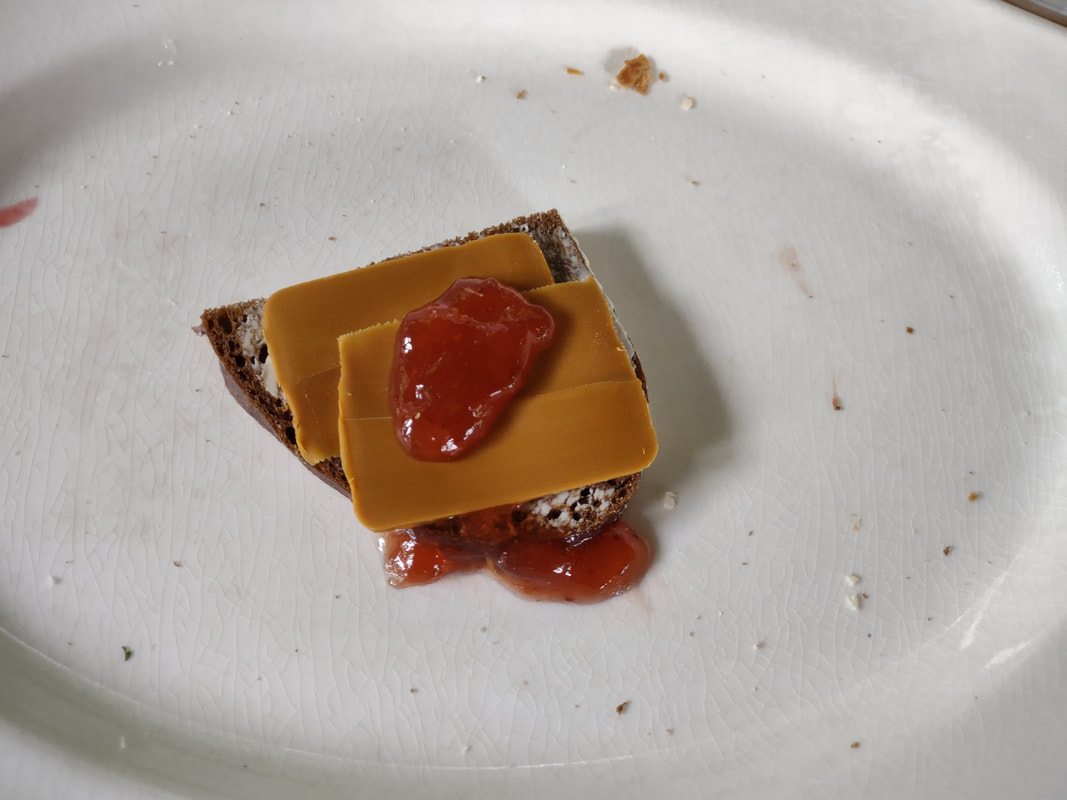


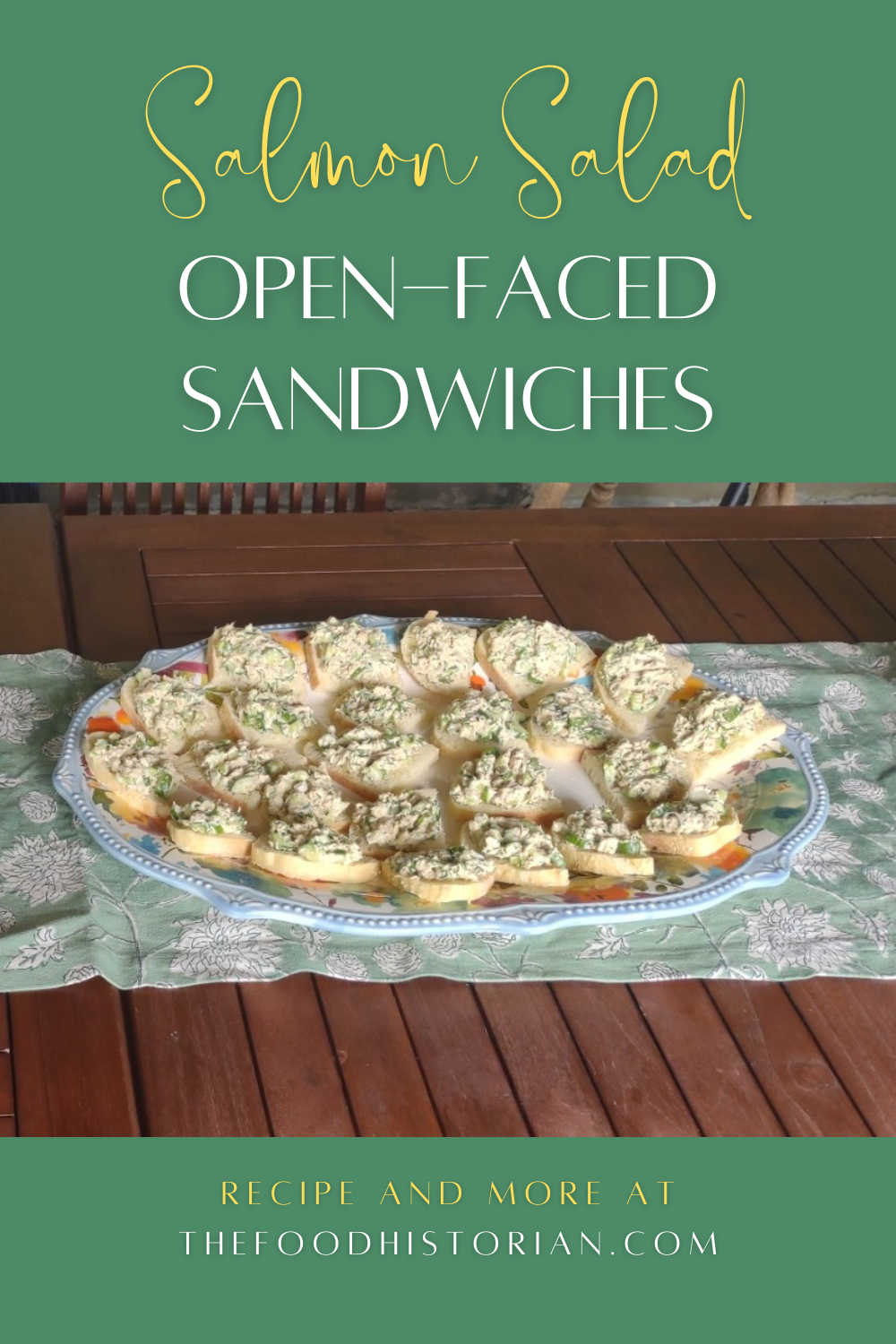

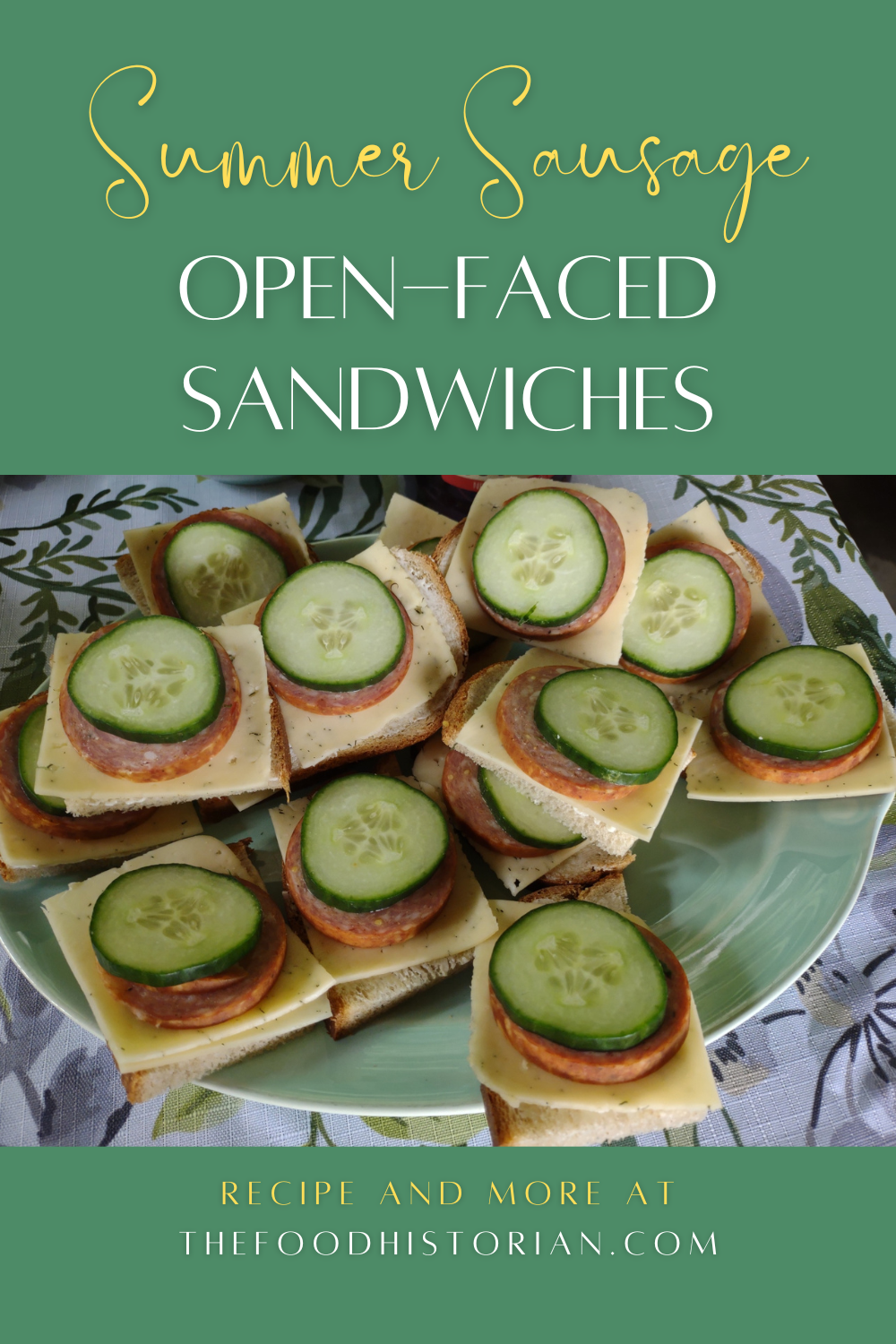



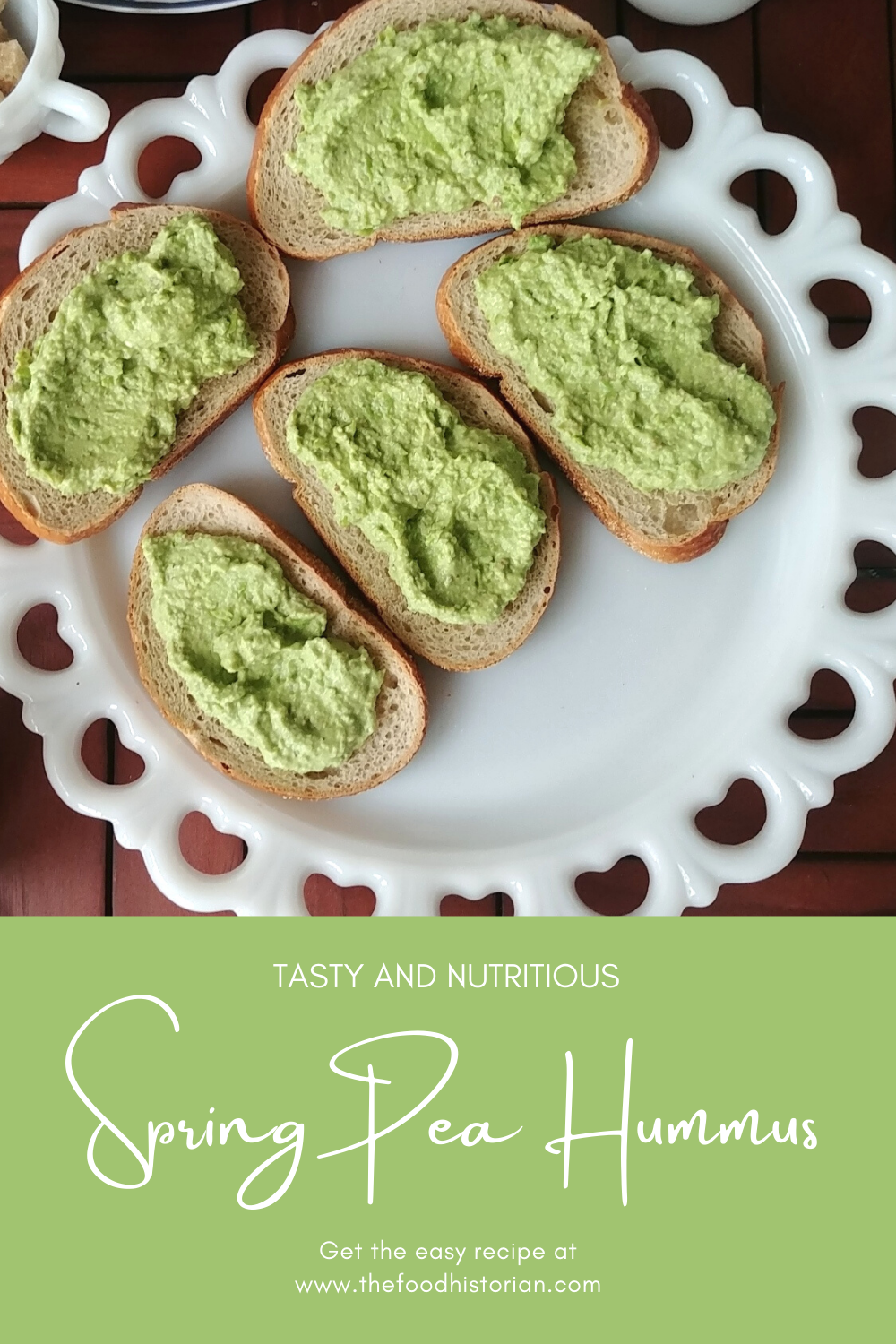






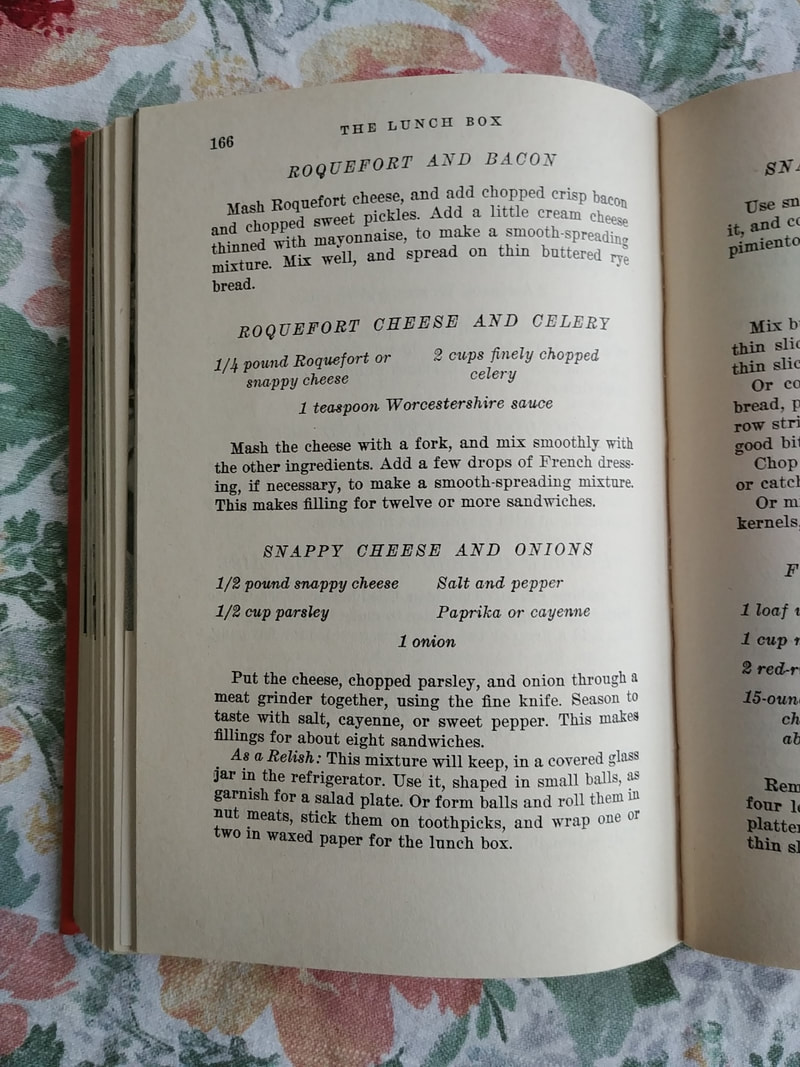
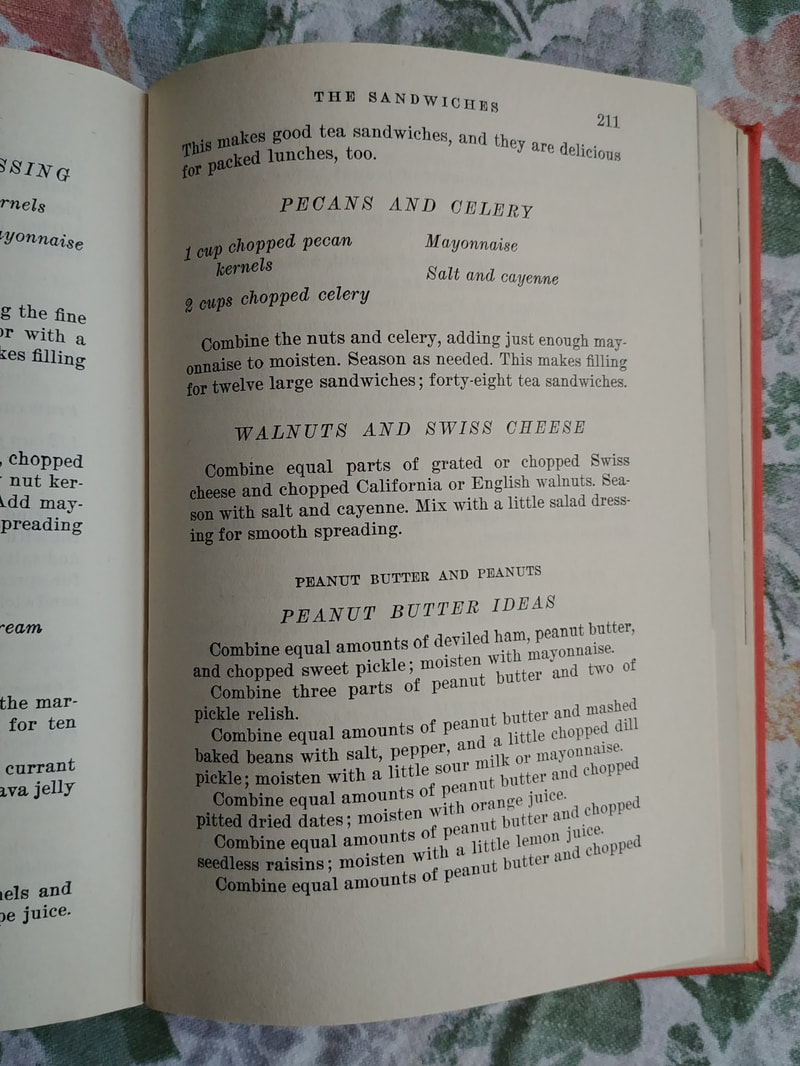
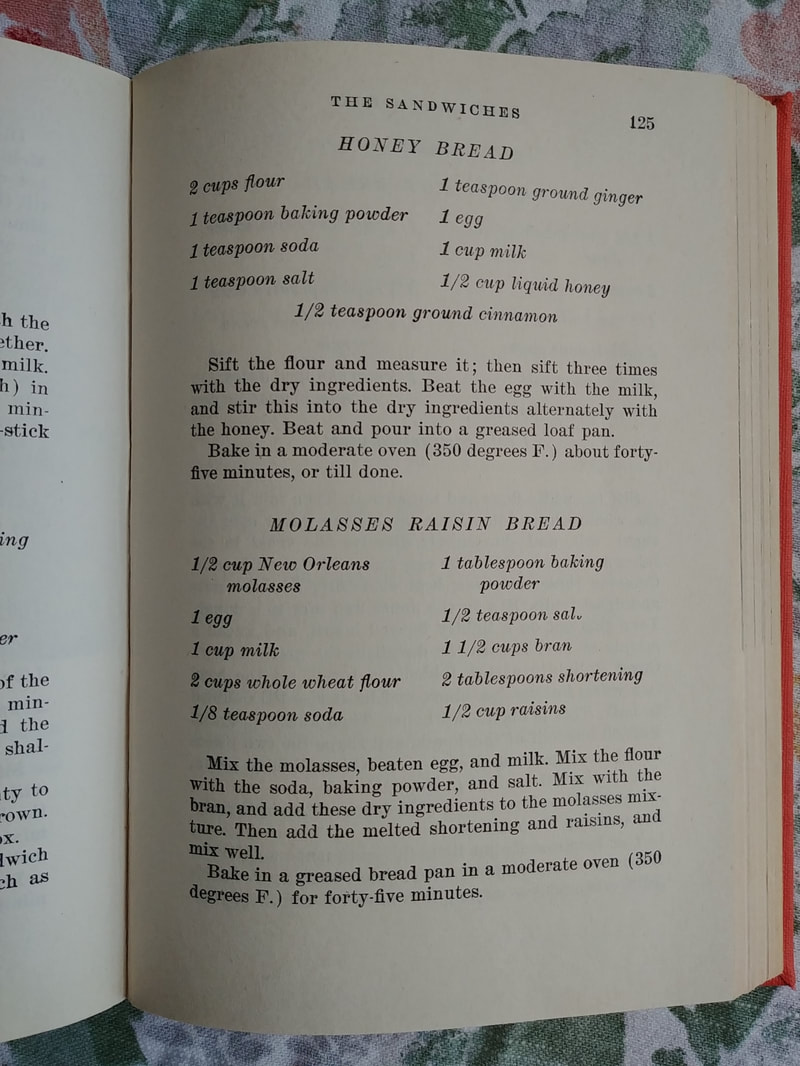

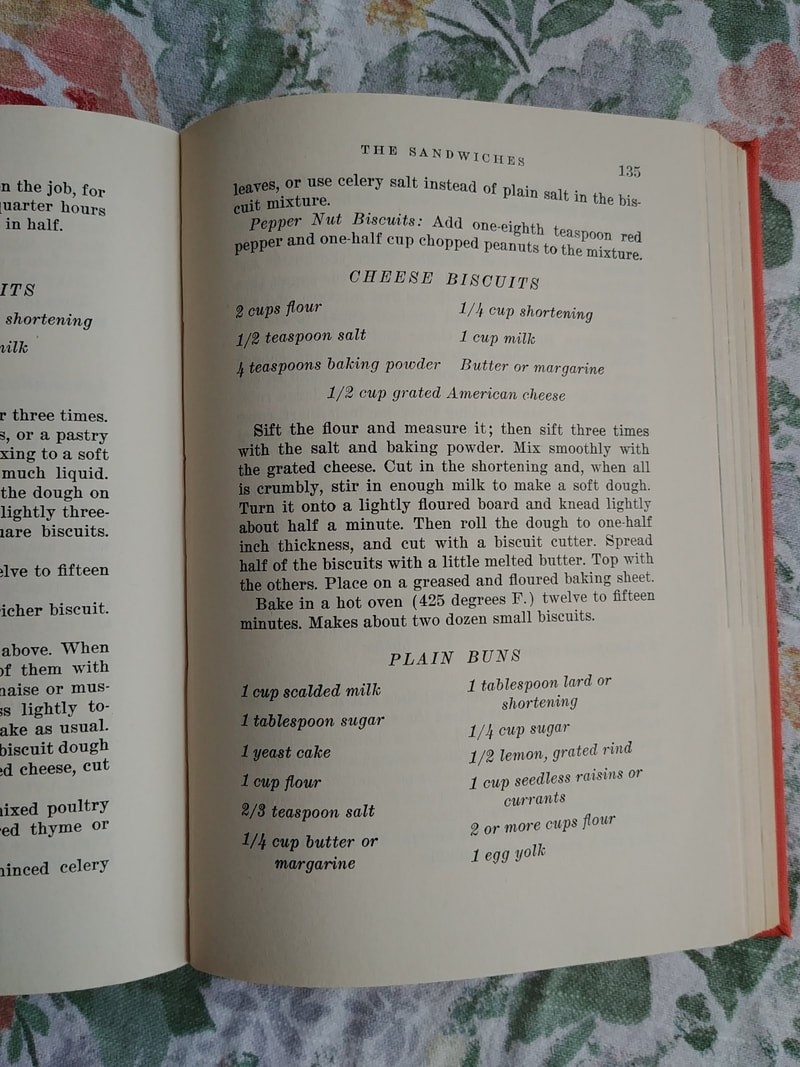

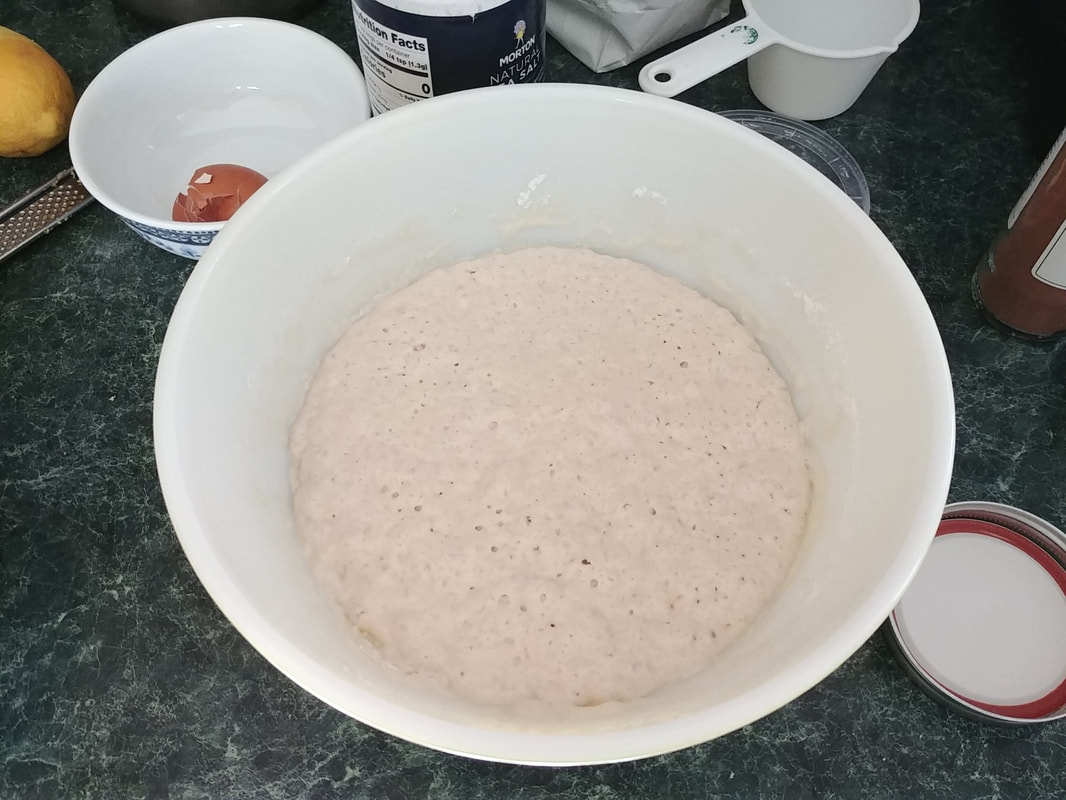
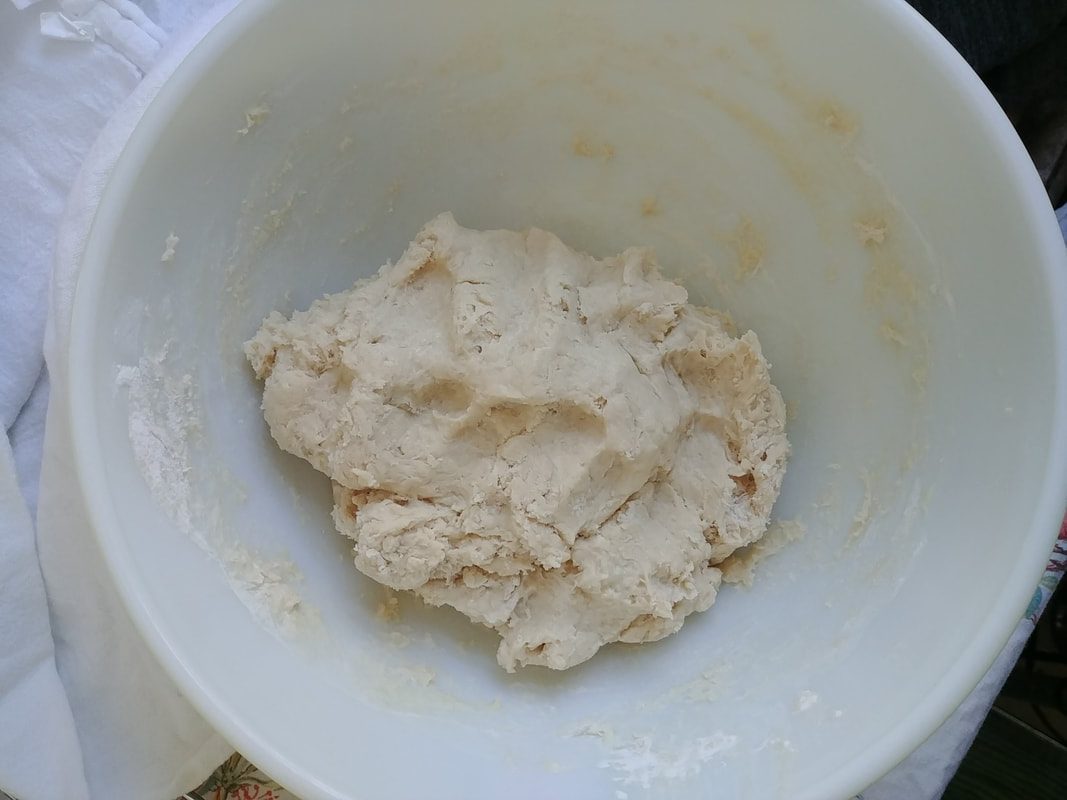




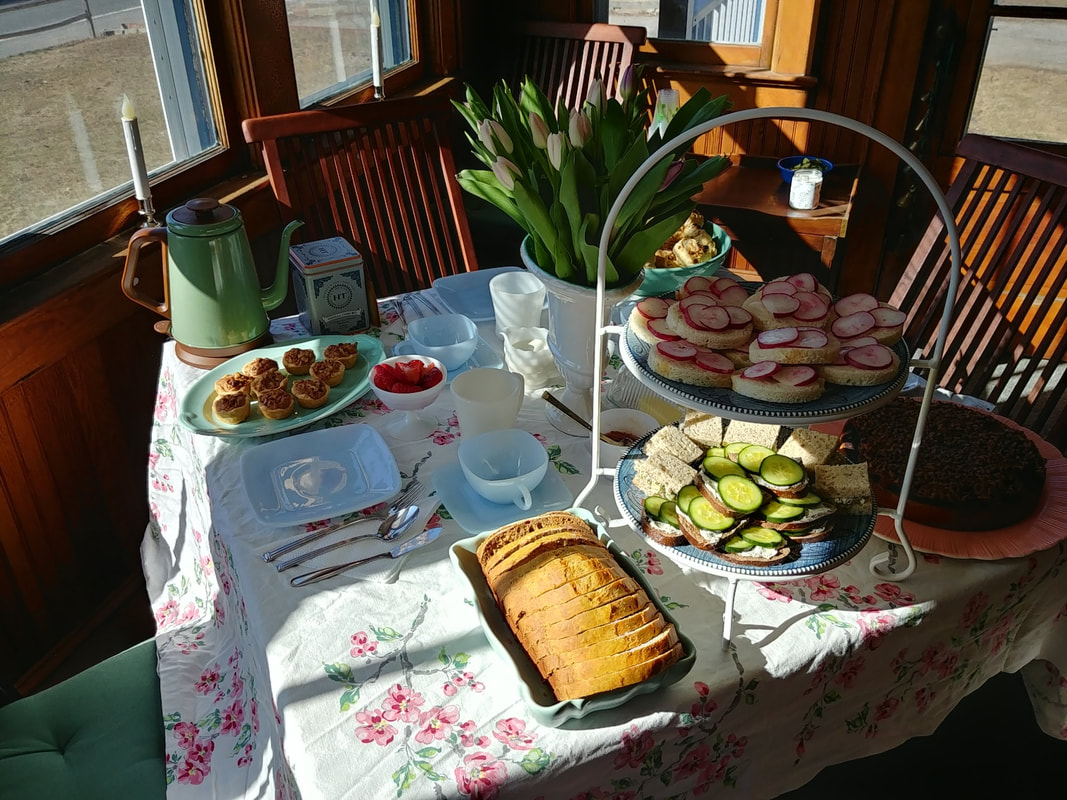
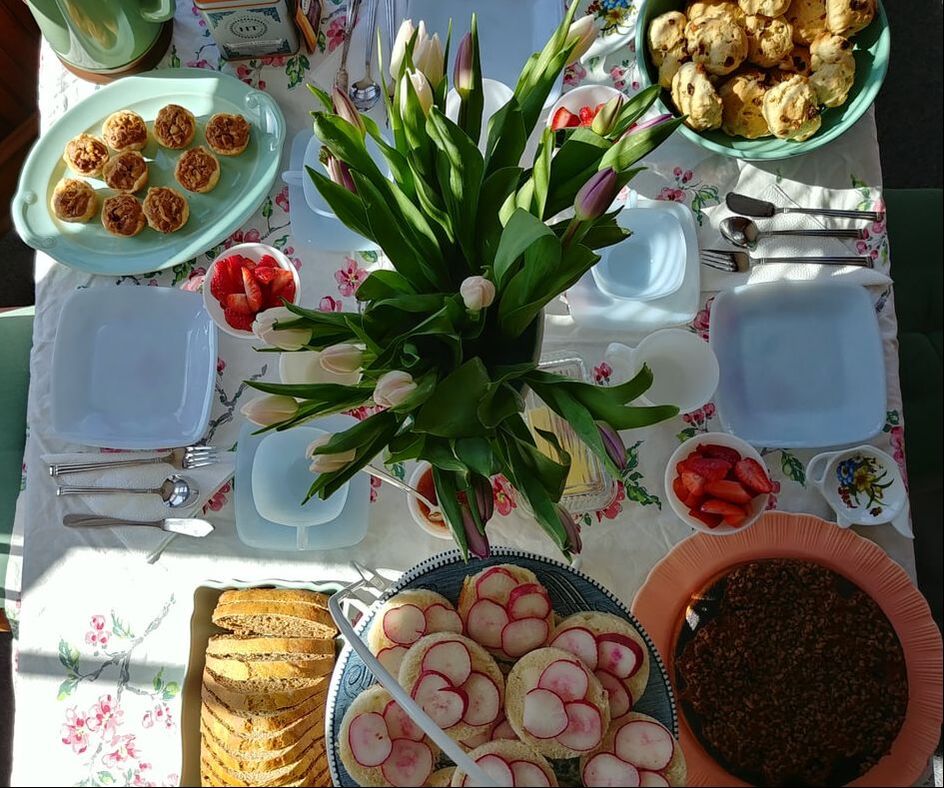




 RSS Feed
RSS Feed